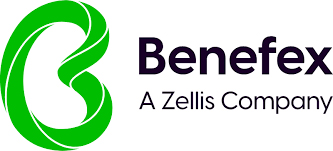Employee Benefits
3 things to help your global benefits fly in 2025
07.01.25
The new year offers a fresh opportunity to revisit how employers can get their benefits package across to their employees more efficiently.
HR and reward leaders are looking to achieve an enormous amount through employee benefits. Our latest research found that the top goals for benefits are to keep and motivate employees, closely followed by improving productivity and wellbeing. In other words, benefits have become the means through which global employers hope to achieve their most strategic workforce objectives.
Our latest research indicates that 7 out of 10 (71%) global employers plan to increase their investment in benefits over the next 12 months. The trick is getting the value of your benefits programme to your people other than through just the annual enrolment window. More than a third (34%) of global reward leaders are struggling to show the value of employee benefits year-round.
To make sure your benefits programme has the intended impact, you’ll need to look beyond the annual benefits enrolment window.
Getting the basics right
It goes without saying that if employees find it difficult to access or select their benefits, they’re less likely to value them. Only 14% of global organisations have a benefits platform – which means most employees are struggling with a clunky, manual and outdated offering.
Employees often waste time trying to find the information and policies they need scattered across disparate systems and platforms. This makes it almost impossible for them to see the full range of benefits available to them. They then have to spend further time chasing, enrolling, changing and claiming for benefits – all of which damages their perception of your offering.
As employees demand even greater flexibility, choice and relevance in their benefits, delivering a smooth, intuitive and personalised benefits experience has become a major driver for tech adoption. A massive 78% of employers plan to implement a platform in the next year. For international organisations, a global platform enables a consistent experience for all employees – even though the benefits on offer differ.
1. Scalable and configurable technology
A basic platform is perfect if you have a small organisation based in one country, with few benefits on offer and minimal growth planned. But for global organisations – or those on a rapid growth journey – your tech needs to go beyond a one-size-fits-all approach; it needs to be future-fit.
To support global growth your benefits tech should be:
- Scalable – able to support your global benefits strategy across multiple countries and languages as your business expands.
- Configurable – able to handle the inevitable complexity of a global programme and be customisable to each region; no two countries are the same when it comes to the benefits available and how they’re administered.
2. Employee support
Some organisations look to put benefits in their own broader HR support centre, while others look to an external managed-service solution. Either way there are several levels of support that you’ll need to boost the success of your benefits tech.
The self-service nature of a benefits platform dramatically reduces benefits-related queries from employees, but there will always be a need for some personalised support. For example, employees may need help with claims, tech support, or support making benefits choices.
Sometimes a chatbot can cover this, but there are instances that need a human-touch to provide empathy, emotional intelligence, and critical thinking. For example, an employee might need to make a claim on their PMI for a serious illness. Or they might have a query that covers multiple issues; an agent can join the dots and own the query through to resolution.
How you get that level of personalised support to all your people, wherever they are, and at whatever time they need it, is a core consideration for the success of your benefits programme – and the wider people strategy it supports. You need that infrastructure to deliver on your current requirements, and to scale in the future ─ particularly with an eye on AI and having that in your employee support roadmap.
3. Engaging communications
You can have a market-leading benefits offering but it won’t get the engagement it deserves if nobody knows about it; especially if you’re limiting your benefits communications plan to an annual enrolment window. From the branding of your benefits platform to campaigns that shine a light on an under-appreciated offering, and targeted promotions to specific demographics – communications are the engagement engine of your benefits platform.
Put together a regular schedule of content and campaigns to remind employees what’s available and keep them coming back to their benefits. Tying benefits messages to other initiatives and messaging (think culture, sustainability, wellbeing, diversity) is a great way to show the value of everything you do for your people.
When you’re rolling out benefits technology in more than one country, you’ll need a suite of communications that support your global strategy. For some countries you might also need to translate communications to ensure they resonate and that employees feel confident making their selections. Local teams can help you understand whether translation is needed – and where you do go ahead with translations, be sure to check that the content still has the intended meaning.
This article was originally published on REBA – 3 things to help your global benefits fly in 2025 | Reward and Employee Benefits Association (REBA)
Associated products and services
Paul Andrews
Global Benefits Director
